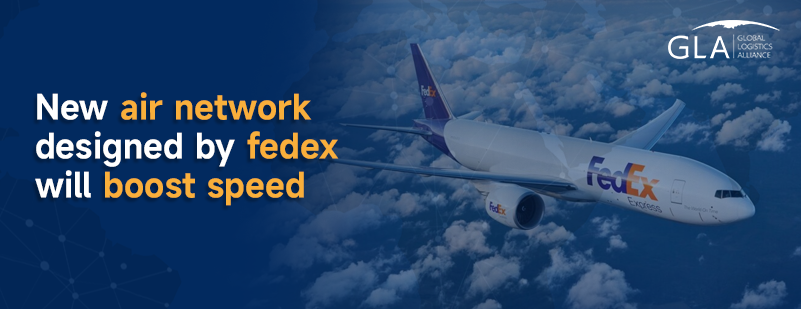Time:2024-03-01 Publisher:Kevin Num:8687

In the ever-evolving landscape of global logistics, efficiency and speed are paramount. FedEx, a key player in the industry, is taking bold steps to reconfigure its air network, aiming to enhance performance, increase profitability, and adapt to the changing demands of the market.
FedEx's ambitious initiative, dubbed "Tricolor," marks a significant shift in the company's approach to its air operations. The redesign divides the air network into three distinct sections – Purple, Orange, and White – each tailored to address specific needs and challenges in the delivery ecosystem.
The driving force behind Tricolor is FedEx's commitment to optimising asset usage and driving savings, particularly in light of the $4 billion savings target set forth in its DRIVE program for fiscal year 2025. With e-commerce continuing to surge and volume dynamics shifting rapidly, the need for a more agile and responsive network has never been greater.
However, FedEx's journey towards air network optimization has not been without its hurdles. The FedEx Express unit faced a 6% year-over-year revenue decline, attributed to various factors including volume and yield pressures, weakened demand from industrial production slowdowns, and a shift in product mix from priority to economy traffic. Lower fuel and demand surcharges further compounded these challenges.
Historically, FedEx's air network operated on a hub-and-spoke model, but Tricolor represents a departure from this traditional approach. By resizing overall capacity to match current demand and enhancing resilience during periods of demand weakness, FedEx aims to bolster efficiency and adaptability across its entire network.
The Purple network serves as the backbone for FedEx's International Priority parcel business, ensuring swift and reliable delivery for time-sensitive shipments. Meanwhile, the Orange network operates off-cycle flights to optimize resources and minimize downtime. The White network leverages FedEx's Global Partner Network to address imbalanced trade lanes, facilitating seamless cross-border trade.
Central to FedEx's strategy is the careful adjustment of capacity to align with demand fluctuations. Over the past year, the company has reduced flight hours, allowing for improved service in the core International Priority business, increased density across all networks, and access to Ground networks at a lower cost point.
In tandem with capacity adjustments, FedEx has undertaken significant restructuring efforts to streamline operations and drive efficiencies. This includes a greater reliance on third-party carriers for less urgent shipments, the consolidation of Ground and Express units, the retirement of freighters, and a reduction in Transpacific and Transatlantic flying to better match demand patterns.
As FedEx continues to navigate the complexities of the modern logistics landscape, the Tricolor redesign represents a bold step forward in the pursuit of operational excellence. By optimizing its air network, addressing key challenges head-on, and embracing innovation, FedEx is poised to deliver enhanced speed, efficiency, and value to its customers around the globe.



